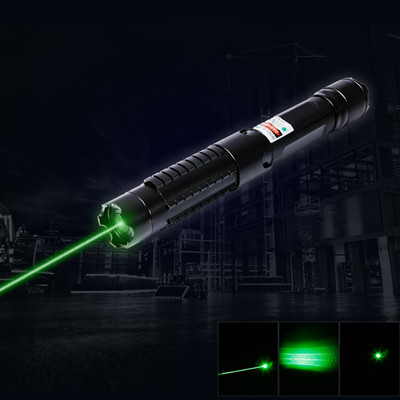Since the advent of the first ruby laser in 1960, laser technology has undergone many changes and has now become an important technology covering many fields such as industrial processing, communications, medical care, and military. The most well-known in recent years is the fiber laser pointer. Fiber laser market overview. As we all know, according to different working media, lasers can be divided into six types: solid-state lasers, gas lasers, dye lasers, semiconductor lasers, fiber lasers and free electron laser pointers. Compared with other lasers, fiber lasers have the advantages of simple structure, high conversion efficiency, good beam quality, low maintenance cost, and good heat dissipation. Therefore, fiber lasers have become the mainstream light source in traditional industrial manufacturing fields such as metal cutting and welding.
According to data from the Industrial Research Center, the global laser market reached USD 13.754 billion in 2018, a year-on-year increase of 5.3%; of which fiber lasers accounted for 51.4%, a year-on-year increase of 6.1%. Due to the impact of fluctuations in the economic environment this year, the development of the industry has slowed down. It is expected that the growth rate of the fiber laser market in 2019 will be basically the same as last year, within 6.5%.
Although fiber lasers are the largest player in the current laser market, in recent years, the homogeneity competition in the Chinese fiber laser market has been serious, and finding differentiated advantages has become a topic that companies attach importance to. The protagonist we are going to discuss today is not only the good monochromaticity and directivity of the laser itself, but also the single-frequency fiber laser with the advantages of long coherence length and narrow spectral line width that are difficult to achieve by ordinary lasers.
What is a single frequency fiber laser? The so-called single-frequency laser, or single-longitudinal-mode laser, is a high-precision single-longitudinal-mode ultra-narrow linewidth laser source based on semiconductor laser pumping, rare-earth-doped fiber as the gain medium, and relatively complex control technology. This laser can provide low phase noise and relative intensity noise, extremely narrow spectral linewidth and long coherence length.
Single-frequency fiber laser: It has the advantages of long coherence and narrow linewidth. It plays an important role in many special fields. Single-frequency fiber lasers first appeared in the 1990s and have made great progress after nearly 30 years of development. Different from the high-power fiber lasers used in the material processing field, this single-frequency laser, located on another track in the fiber laser market, has completely different application scenarios due to its unique properties and characteristics.
Due to the narrow line width and low noise of the single-frequency laser, it means that it is more sensitive to high-precision vibration, and the long coherence length ensures the accuracy of long-distance sensing. Therefore, the single-frequency laser has high precision/high sensitivity/long distance Sensing systems, next-generation communication technology, coherent technology, remote sensing technology, coherent lidar and other fields have outstanding advantages.
The so-called phase noise, that is, the spectrum line of the green laser pointer light emitted by the single-frequency laser pointer is no longer a single line, but has a certain width. The size of this width reflects the level of the phase noise of the single-frequency laser. The specific manifestation of phase noise is: taking the observation point as a reference, the light wave randomly fluctuates or delays in phase with time. Phase noise is one of the most important parameters to measure single-frequency lasers, and has an important influence on the linewidth of single-frequency lasers.
Relative intensity noise refers to the ratio of the average output power of the laser to the noise at a certain frequency. In practical applications, the relative intensity noise of single-frequency lasers is often used as an important noise source, affecting the background of coherent detection systems (such as continuous working coherent Doppler wind lidar, phase-sensitive OTDR system demodulation system) Noise level.

